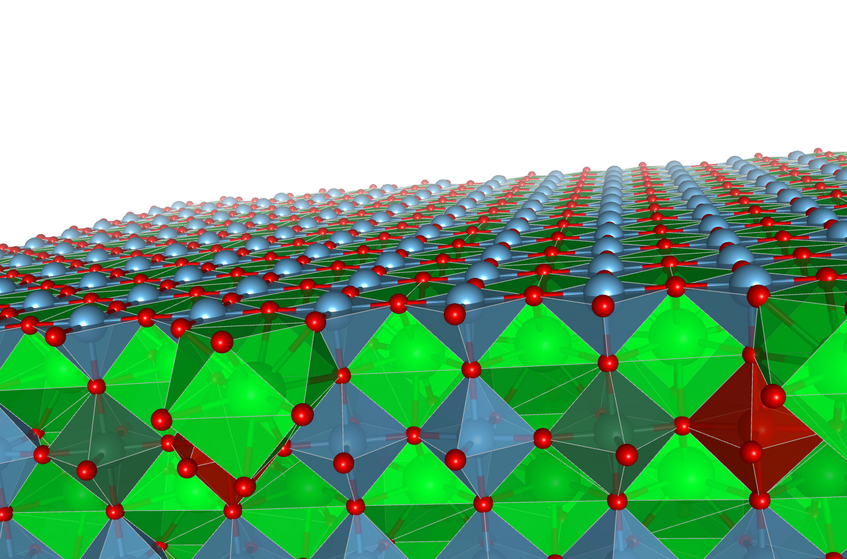Perspective View of Strontium Titanate

© VESTA (K. Momma and F. Izumi, "VESTA 3 for three-dimensional visualization of crystal, volumetric and morphology data," J. Appl. Crystallogr., 44, 1272-1276 (2011))
Title of the project: Surface Physics of Cleaved Cubic Perovskites
Name of the VDSP student: Florian Ellinger
Project supervised by: Cesare Franchini
Greetings, my name is Florian Ellinger and back in March 2020 I started working as a PhD in the group for Quantum Materials Modelling, led by Prof. Cesare Franchini here in Vienna. In my research, I investigate perovskite surfaces through means of ab initio simulations – computer simulations which do not require empirical input data as a reference. In my free time, I usually like to play videogames or watch some TV shows while social distancing, otherwise I also love to meet with friends, play some cards, or go to the gym as counterweight to the office work.
Perovskites are a large and versatile group of materials, combining interesting electronic properties with a potentially low price tag for the use in industry, the latter thanks to their abundant occurrence in nature. Recent research suggests their potential usage as semi-conducting component in numerous applications - spanning from organic perovskites in photovoltaic solar cells to inorganic ones in sensor technology, catalysis, and fuel cells, to name just a few. Currently, I am investigating a surface system of the inorganic perovskite Strontium-Titanate (SrTiO3), doped with Niobium, in my simulations. This material is especially interesting due to its specific plane-wise stacked structure and crystal lattice distortions, leading to rather intricate electronic properties. My focus here lies on the formation of small polarons in this system near the surface. Such quasi-particles occur when an excess charge carrier, in my case an electron introduced through doping, distorts the crystal locally and this way couples to the materials phonons. This leads to a trapping of the electron in a lattice site, severely altering electronic properties of a material such as its conductivity, for example. Polaron formation is promoted near the surface due to the broken symmetry and energetically easier distortions, thus many surface effects are governed or at least influenced by their presence. In applications, surfaces and interfaces are usually where the interesting physics happens, so understanding the polaronic properties of novel materials is an important aspect for their use in future technologies. All my simulations are done using the Vienna Ab initio Simulation Package VASP, which is developed directly here at the University of Vienna and used worldwide for highly accurate quantum-mechanical ab initio simulations. With this renowned code pretty much next door, and state of the art computational resources, such as the Vienna Scientific Cluster (VSC), Vienna is a great city for my kind of research, and I am exited about being able to contribute to science this way.
